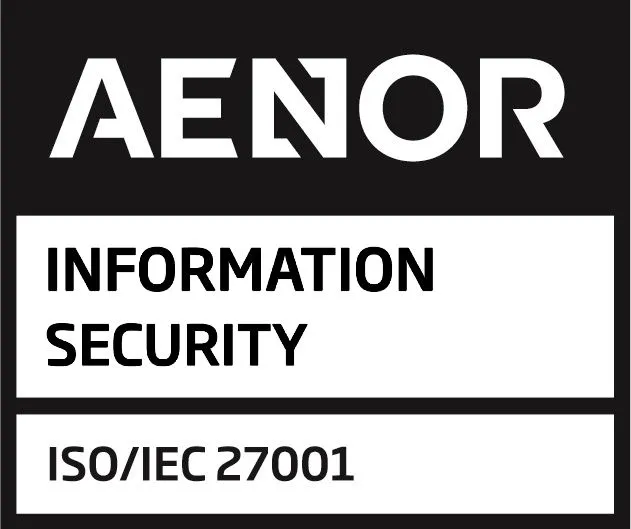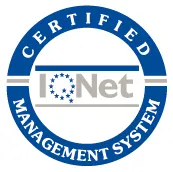
When innovation or improvement needs arise in companies, corporate training plans become more important… and you have to decide quickly what to offer, to whom, when and how. And of course, always with tight budgets and many expectations on top. Sounds familiar, doesn’t it?
Table of Contents
Corporate training can be a great lever for developing talent and improving results. But when there are dozens of options on the table, where do you start? Which one has more impact on the business or provides more value according to the characteristics of the company?
In this post we help you to put order in all that chaos. You will see a clear classification with 30 types of training and recommendations on which ones fit best according to your context. Because yes: not all training is the same for everyone. And making better choices can make all the difference.
The big challenges of corporate training
Those who work in development and training (L&D) within companies are well aware of the day-to-day challenges. It’s not just about choosing what content to deliver: it’s about justifying decisions, dealing with limited resources, keeping the team engaged… and, at the same time, demonstrating results.
According to reports by LinkedIn Learning, and CIPD there are a number of challenges that are repeated in almost all sectors.
1. Demonstrating the business impact of learning
One of the biggest difficulties remains: how to prove that training really moves the business needle? Without data linking programmes to real improvements – in productivity, retention or performance – it is difficult to defend the investment to management.
2. Lack of time and resources
The intention is there, but the timing doesn’t help. Learning and Development (L&D) teams often have more ideas than budget, and employees often can’t find the time to train. The consequence: well-designed courses that are not fully utilised.
3. Misalignment with strategic objectives
There is not always a clear bridge between what the company needs to grow and what is offered in its training plans. When L&D is not present in key decisions, it is easy for training initiatives to lose focus or impact.
4. Digitalisation and new skills
Technology is advancing faster than content is being updated. Knowing which skills are going to be key in a year or two – and training in them today – has become a task of foresight rather than planning.
5. Low engagement and informal learning
Many employees do not complete courses, or do not enrol at all. Often they learn more through practice or informal exchange with colleagues... but it is learning that is neither seen nor measured.
6. Disparity in access to training
When there are very different profiles in the same company – management team and staff, administrative and operational personnel – it is not easy to offer relevant training to all. There are gaps in access, format and even motivation.

Types of corporate training
The universe of corporate training is wide, and not everything is suitable for every company. The key is to be well aware of the options available and to know how to align them with the business objectives, the profile of the team and the resources available. Check out the 30 types of business training organised by major areas and the best tips on how to apply them:
Soft skills training
Ideal for strengthening collaboration, leadership and day-to-day management.
- Effective communication: Effective communication improves the clarity and impact of ideas when conveyed orally or in writing.
- Leadership and team management: trains new leaders and reinforces skills of current managers.
- Emotional intelligence: helps to recognise and manage one’s own and others’ emotions in the workplace.
- Conflict resolution: teaches how to deal with tensions or disagreements in a constructive way.
- Negotiation skills: key in commercial roles, purchasing or any interaction where agreement is sought.
| TRAINING TYPE | IDEAL PROFILE/INDUSTRY | L&D RECOMMENDATION |
|---|---|---|
| Effective communication | Sales teams, customer service, middle management, hybrid or remote | Ideal for multicultural or geographically dispersed environments; use case studies and role-play. |
| Leadership and team management | New leaders, project managers, emerging technical profiles | Offer post-course mentoring and follow-up by HR or management. |
| Emotional intelligence | High-pressure teams (call-centres, agencies), change management roles | Combine theory with motorway exercises and group reflections.. |
| Conflict resolution | HR, middle management, heterogeneous teams | Use real cases from the company to make learning tangible. |
| Negotiation skills | Purchasing, sales, contracts, suppliers | Role-plays with actors or peers for greater realism. |
Technical or specialised training (hard skills)
Prepares for specific tasks or functions that require technical knowledge.
- Languages: improves communication in international environments or with global clients.
- Office automation and digital tools: teaches the use of Excel, PowerPoint, Google Workspace, among others.
- Project Management: Training in methodologies such as Agile, Scrum or PMBOK. Highly valued in operations, technology and product development teams.
- Effective presentations and data storytelling: Teaches how to communicate complex ideas clearly and persuasively, combining design and data storytelling.
- Data analytics: develops skills to interpret metrics and make data-driven decisions.
| TRAINING TYPE | IDEAL PROFILE/INDUSTRY | L&D RECOMMENDATION |
|---|---|---|
| Languages | International teams, support, sales, HR | Training adapted by levels and focused on real situations (call-centre, negotiation). |
| Office automation and digital tools | Administrative, projects, back-office | Prioritise modules according to actual use (e.g. advanced Excel for operations; PowerPoint for presentations). |
| Project management | Product teams, IT, marketing, operations | Approve certifications or micro-credits in management with direct applicability. |
| Effective presentations and data storytelling | Sales people, analysts, project managers, technical profiles with interlocution | Use real examples and practical exercises. Key in sectors such as B2B sales, consulting and tech. |
| Data analysis | Analysts, marketing, finance, operations | Uses internal projects as a practical basis for learning and improving current processes. |
Digital and technological training

Essential in environments that are committed to digital transformation.
- Use of collaborative tools: practical training on platforms such as Teams, Notion or Slack.
- Cybersecurity for employees: awareness of digital threats and good practices. It prepares employees to identify an repport cybersecurity issues and support IT security team.
- Process automation: teaches how to optimise tasks with tools such as Zapier or Power Automate, N8N.
- Artificial Intelligence and machine learning (basic level): introduces key AI concepts applied to work.
- Digital transformation and agile culture: helps to understand how to adapt to technological changes with a flexible mindset.
| TRAINING TYPE | IDEAL PROFILE/INDUSTRY | L&D RECOMMENDATION |
|---|---|---|
| Use of collaborative tools | All profiles, especially hybrid and remote | Offers on-demand modules + social learning sessions in teams. |
| Cybersecurity for employees | All profiles, especially finance or IT | Apply phishing simulations and post-training follow-up. |
| Process automation | Operations, IT, marketing, HR | Training + challenge” formats: implement real automation. |
| Artificial Intelligence and machine learning (basic level) | Middle management, innovation, strategy | Highlight use cases in the company and develop simple prototypes. |
| Digital transformation and agile culture | Executive teams, IT, operations | Experiential workshops (agile simulations, innovation sprint). |
Legal training and compliance
Protects the company and its employees against regulatory and legal risks. Many companies already have mailboxes to provide employees with secure and direct communication channels to report any unethical conduct.
- Occupational risk prevention (ORP): ensures safety in the working environment.
- GDPR and data protection: mandatory training for those handling personal data.
- Prevention of harassment at work: raises awareness and establishes protocols for action against harassment.
- Code of ethics and conduct: reinforces the values and behaviour expected in the company.
- Anti-corruption and compliance: teaches how to act transparently and comply with current legislation. In addition, for many companies, it is mandatory to provide employees with a whistleblowing mailbox.
| TRAINING TYPE | IDEAL PROFILE/INDUSTRY | L&D RECOMMENDATION |
|---|---|---|
| Occupational risk prevention (ORP) | Operators, logistics, factory, office | Blended training: face-to-face + periodic digital monitoring. |
| GDPR and data protection | Marketing, legal, customer service, HR | Case studies and gap analysis within the company. |
| Prevention of harassment at work | All staff, especially middle management | Simulations of real situations and reinforcement of internal protocols. |
| Code of ethics and conduct | All employees, more intensive on management | Reinforce via gamified e-learning with final quiz. |
| Anti-corruption and compliance | Finance, purchasing, suppliers, top management | Up-to-date legal cases relevant to the industry. |
Well-being and sustainability
Training that connects with the company’s purpose and commitment to people.
- Stress management and mental health: offers tools to manage pressure and take care of emotional balance.
- Diversity and inclusion: fosters fairer, more respectful and representative work cultures.
- Corporate social responsibility (CSR): helps to integrate actions that have a positive impact on the community, like carpooling.
- Environmental sustainability: trains in practices that reduce the environmental impact of business activity.
- Mindfulness and emotional well-being: promotes habits of mindfulness and self-care during the working day.
| TRAINING TYPE | IDEAL PROFILE/INDUSTRY | L&D RECOMMENDATION |
|---|---|---|
| Stress management and mental health | 24/7 care teams, high pressure, remote | Introduce face-to-face sessions and brief online follow-up. |
| Diversity and inclusion | HR, leadership, corporate culture | Define a plan of action and follow up of the change + reflection forum. |
| Social responsibility (CSR) | All, especially community-linked teams | Involves the team in real projects to encourage commitment. |
| Environmental sustainability | Production, logistics, CSR, offices | Tailored to the company context: energy or social challenges. |
| Mindfulness and emotional well-being | High stress people, offices, customer care | Measurable sessions (e.g. before and after the programme). |
Training in internal processes and tools
Fundamental for day-to-day productivity and alignment.
- ERP or in-house software training: facilitates efficient use of key internal systems.
- Internal procedures and workflows: ensures that everyone knows how things are done and why.
- Customer service according to protocols: train to deliver a consistent and quality experience.
- Use of CRM or internal platforms: optimise the management of commercial or support relationships.
- Digital onboarding: welcome new employees in a structured, agile and scalable way. Many companies manage this from a smart employee portal, which automates the process and improves the experience from day one.
| TRAINING TYPE | IDEAL PROFILE/INDUSTRY | L&D RECOMMENDATION |
|---|---|---|
| ERP or own software | All operational or management roles | Create micro-modules by function: this avoids content overload. |
| Internal procedures and workflows | All staff, especially new staff | Include checklists and formats accessible from screens or apps. |
| Customer service according to protocol | Sales, service, technical support | Sessions based on real cases: good/bad service and responses. |
| Use of CRM or internal platforms | Sales, support, marketing | Internal success stories to inspire effective use. |
| Digital onboarding | New employees, remote team | Gamification, progress levels and assigned mentors. |
Engage, recognize, and retain — all in one smart points reward platform.
What type of training works best for what type of company?
Choosing the right corporate training is not just about content: it is also about how, when and for whom. The same course can be a success or a failure depending on the format, timing or team profile. Here are some practical recommendations depending on the type of company or context. They will help you make better decisions and prioritise what really adds up.
Large companies vs. startups
In large companies, a combination of standardised training (e.g. on compliance, security, corporate culture) and platforms that allow for scalability and monitoring works best. The digital format – especially LMS-type platforms or integrated systems such as Vip Connect – allows everything to be managed, updated and measured more efficiently.
In startups, agility and autonomy are valued. Here, training must be short, applied and easily integrated into day-to-day life. The most useful formats are microlearning, interactive workshops or even peer-to-peer learning.
Traditional vs. digital sectors
In traditional sectors (industry, construction, logistics), the focus is on security, compliance and operational efficiency. Training must be clear, practical and often face-to-face or blended learning, as not all staff have regular access to computers. Opt for highly visual and easily accessible content (tablets, screen sharing, mobile apps).
In digital sectors (technology, agencies, SaaS), digital skills, agile methodologies, data analysis or adaptive soft skills are key. Here, teams are already used to learning online, so you can use platforms, asynchronous courses and self-assessments.
Face-to-face vs. hybrid or remote teams
In face-to-face teams, direct contact enhances social learning. But that doesn’t mean leaving out digital content: it can complement and reinforce what is learned in the classroom.
In hybrid or remote teams, the challenge is to maintain connection and engagement. Short lessons, quizzes, weekly challenges or even online collaborative learning (groups, forums, internal communities) work particularly well. Add social elements, continuous feedback and recognise progress with small milestones (Vip Incentives can help you with this 😉).
Companies with diverse profiles (blue collar vs. white collar)
This is one of the most challenging scenarios. When operators, technicians, administrative staff and managers coexist, it is difficult for the same training to work for everyone. The great challenge here is inclusion: to offer training opportunities adapted to each reality.
Segment your offer. For example, highly visual and mobile technical training for operatives, and more strategic and structured programmes for middle management or leaders. Whenever possible, offer different versions of the same content depending on the profile.
How to prioritise high-impact training

With so many different topics, formats and profiles, prioritising corporate training has become a necessity. Here are some practical criteria to help you decide which trainings deserve to be at the top of your list.
- Start with strategic objectives: What does the company want to achieve this year? Create a priority map where each training is linked to a specific objective. This will help you defend budgets and show impact.
- Identify real gaps (not assumptions): Use short surveys, internal interviews or performance data to detect needs. Not everything requires training, and not all training needs to be for everyone.
- Involve middle leaders: They know their teams and their challenges best. Ask leaders to identify 1-2 key competencies per team. Then translate that into relevant training pathways.
- Opt for formats that favour real learning: Prioritise microlearning (short and applicable content), learning integrated into the workflow, and platforms that facilitate monitoring and evaluation. Tools such as Vip Connect allow you to combine content, assessment, gamification and analytics in one place.
Good training starts with good decisions
Corporate training has enormous potential to drive personal and business growth. But that potential can only be realised if you choose the right content, formats and timing.
Having a clear plan does not guarantee success, but it does multiply your chances of achieving it. Because when training becomes a strategy, it stops being an expense… and starts being an investment.
New to Vip District? Contact us and find out what our platform has to offer!








